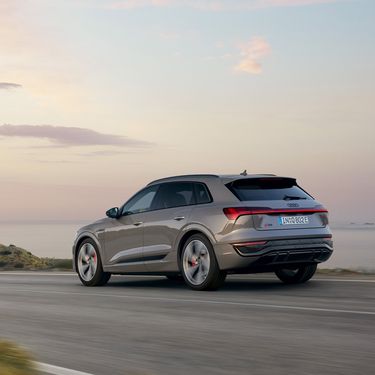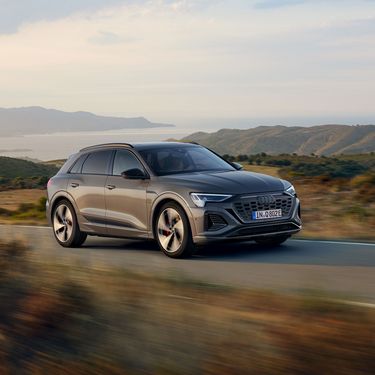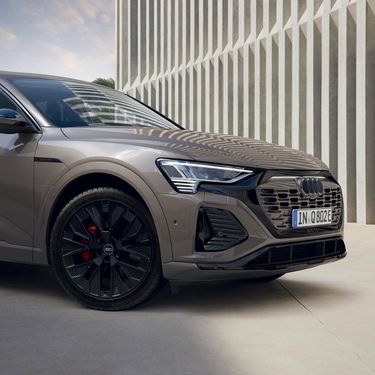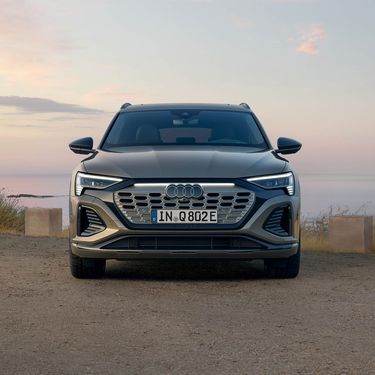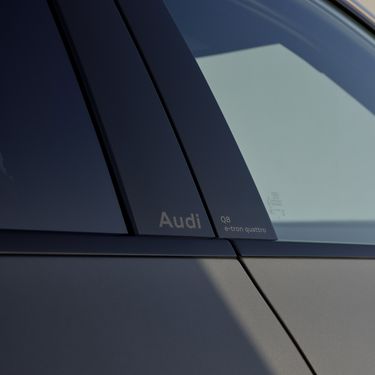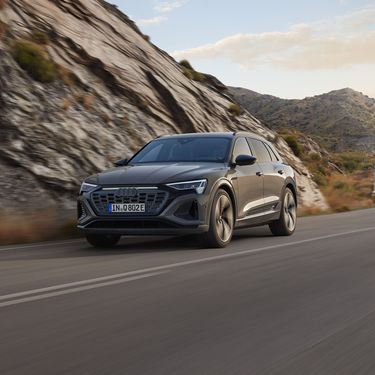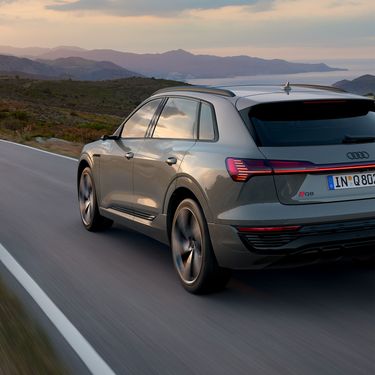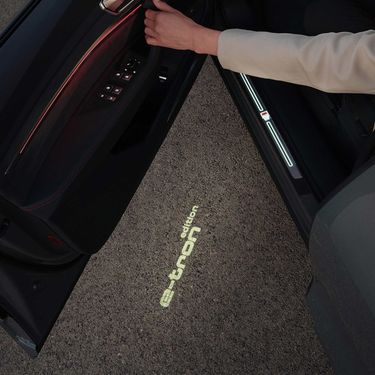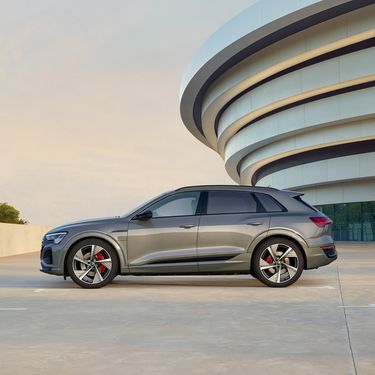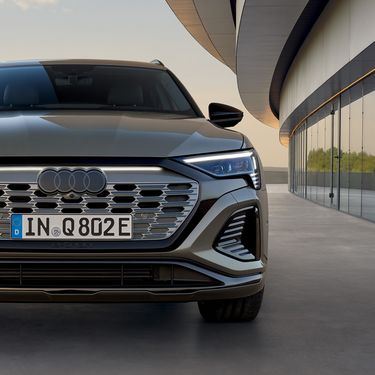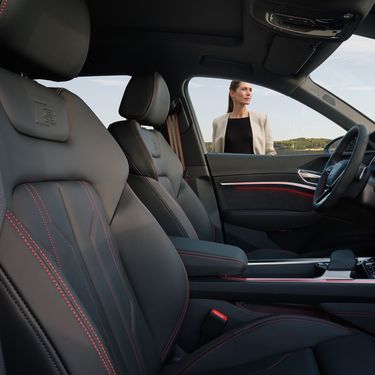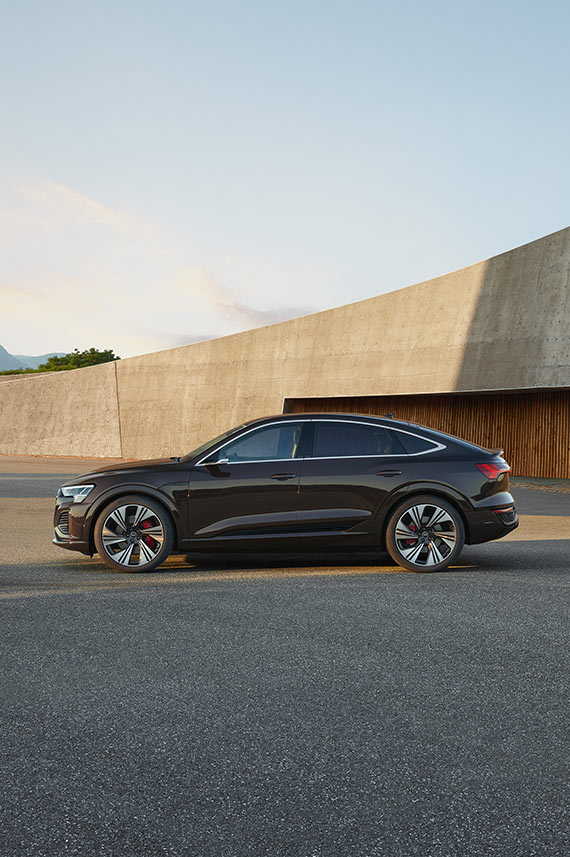Audi Q8 e-tron | Cayman Islands | The perfection of progress.
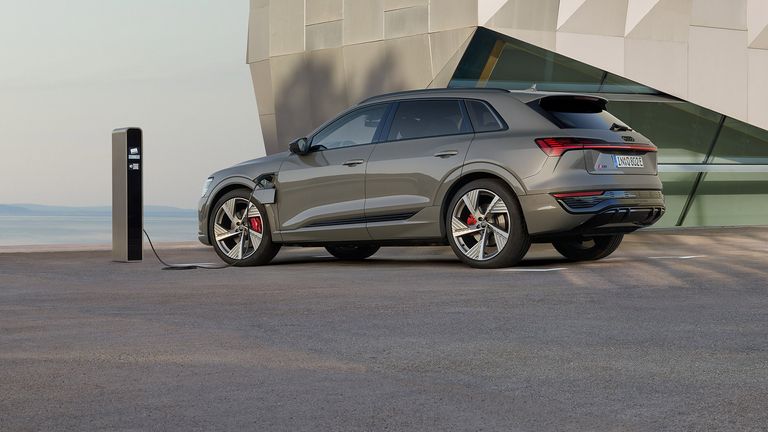
Q8 e-tron
Charged from 10% to up to 80% in
31
min³
at maximum DC charging power⁴
Range (WLTP), up to
582
km
Maximum DC charging power, up to
170
kW⁴
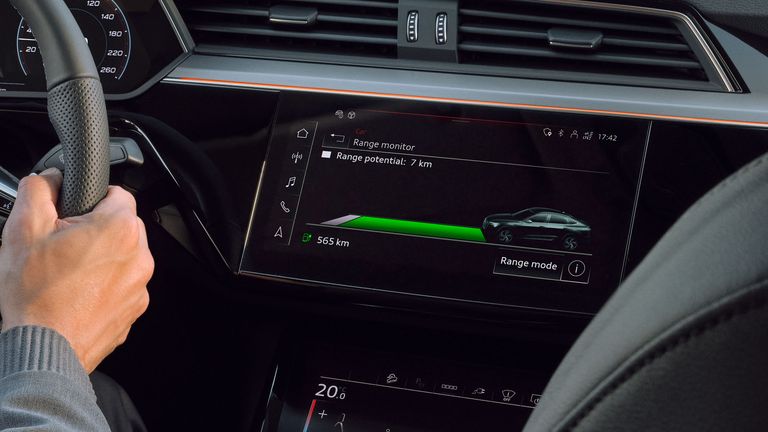
Electrical maximum power
300
kW¹
Total torque: 664 Nm
Acceleration (0-100 km/h)
5,6
s¹⁰
Battery capacity (net), up to
106
kWh
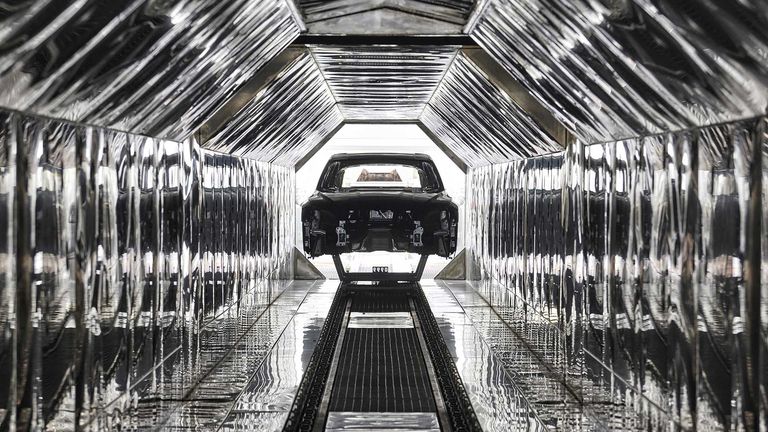
1
This catalogue was developed for the sole purpose of informing customers and consumers of the specifications, components and other existing accessories of AUDI brand vehicles marketed within the European Union, content that may be modified at any time and without prior notice by AUDI without incurring any liability.
In accordance with the foregoing, AUDI does not guarantee the availability of the vehicle model referred to in this catalogue with all the specifications and components indicated herein, since these may vary or be limited depending on your location.
Under no circumstance will AUDI be liable to customers, consumers and/or any third party for the non-existence, unavailability or modification of the models contained in this catalogue, being the obligation of the customer, consumer and/or any third party to verify the availability of the model prior to its acquisition depending on their location.
In accordance with the foregoing, AUDI does not guarantee the availability of the vehicle model referred to in this catalogue with all the specifications and components indicated herein, since these may vary or be limited depending on your location.
Under no circumstance will AUDI be liable to customers, consumers and/or any third party for the non-existence, unavailability or modification of the models contained in this catalogue, being the obligation of the customer, consumer and/or any third party to verify the availability of the model prior to its acquisition depending on their location.
2
Audi Q8 55 e-tron quattro: Power consumption (combined¹) in kWh/100 km: 24.4–20.6; CO₂ emissions (combined¹) in g/km: 0. Information on fuel/power consumption and CO₂ emissions with ranges depending on the selected equipment of the vehicle. Only consumption and emission values according to WLTP and not according to NEDC are available for the vehicle.
3
The charging time of the battery can vary depending on a number of factors including ambient temperature, the use of other country-specific connectors and use of the preconditioning function (e.g. remote-controlled air conditioning of the vehicle). When using domestic connectors, the e-tron charging system limits charging capacity.
4
Applies for Audi Q8 55 e-tron quattro (Power consumption (combined¹) in kWh/100 km: 24.4–20.6; CO₂ emissions (combined¹) in g/km: 0. Information on fuel/power consumption and CO₂ emissions with ranges depending on the selected equipment of the vehicle. Only consumption and emission values according to WLTP and not according to NEDC are available for the vehicle) with a charging capacity of up to 170 kW.
5
Audi Q8 Sportback 55 e-tron quattro: Power consumption (combined¹) in kWh/100 km: 24.1–19.9; CO₂ emissions (combined¹) in g/km: 0. Information on fuel/power consumption and CO₂ emissions with ranges depending on the selected equipment of the vehicle. Only consumption and emission values according to WLTP and not according to NEDC are available for the vehicle.
6
The Range mode limits the top speed to about 90 km/h, for example, adjusts the settings for comfort functions such as the automatic air conditioning and deactivates the seat heating.
7
The optional e-tron charging system compact has a charging capacity of up to 11 kW. Charging capacity depends on the type of mains connector used, the country’s voltage and the number of available phases of the power network as well as the customer’s own domestic installation. It may therefore be lower in some cases. The mains connecting cable with industrial connector and the operating unit of the charging system are matched to each other and enable a certain charging capacity. Although it is technically feasible to switch the mains connecting cable to a different industrial connector later on, this could result in a lower charging capacity.
8
Please note: The two AC charging ports cannot be used simultaneously. The simultaneous use of both AC charging ports is prevented by a locking concept for the charging flaps.
9
The standard e-tron charging system compact is limited to 11 kW.
10
Due to physical constraints, the maximum output for the acceleration figures given can be repeated multiple but not an unlimited number of times in a row.
11
Please note: The systems work only within system limits and assist with driving However, the driver remains responsible for driving the vehicle and is required to be attentive at all times.
12
From Audi Sport GmbH.
13
Audi SQ8 Sportback e-tron quattro: Power consumption (combined¹) in kWh/100 km: 27.0–23.5; CO₂ emissions (combined¹) in g/km: 0. Information on fuel/power consumption and CO₂ emissions with ranges depending on the selected equipment of the vehicle. Only consumption and emission values according to WLTP and not according to NEDC are available for the vehicle.
14
Audi Genuine Accessories are available from AUDI AG for an extra charge. Accessories are not factored in when calculating the vehicle’s fuel consumption and emission figures. As such, accessories can be fitted only after initial registration.
15
Alloy wheels with gloss turned or gloss milled finish as well as polished or partly polished alloy wheels must not be used in wintry road conditions. For manufacturing reasons, the rim surface does not have sufficient corrosion protection for such use and can be damaged permanently by road salt or similar.
16
CO₂ emissions that cannot currently be prevented using technical means are offset with carbon credits.

